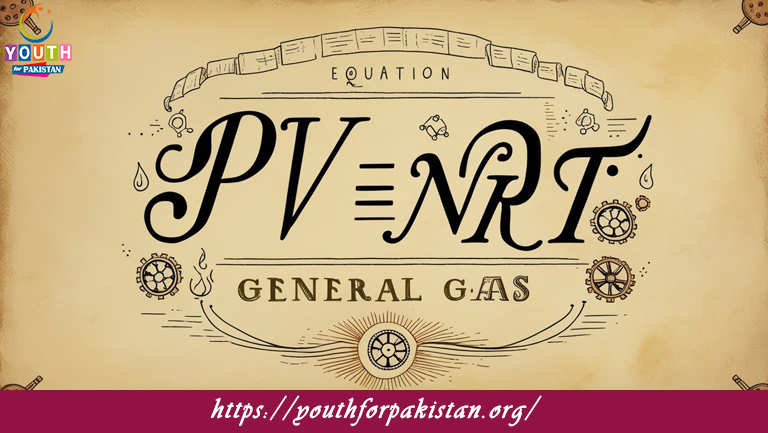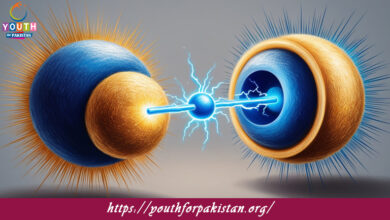General Gas Equation MDCAT MCQs with Answers

Welcome to the General Gas Equation MDCAT MCQs with Answers. In this post, we have shared General Gas Equation Multiple Choice Questions and Answers for PMC MDCAT 2024. Each question in MDCAT Chemistry offers a chance to enhance your knowledge regarding General Gas Equation MCQs in this MDCAT Online Test.
The General Gas Equation is a combination of which laws?
a) Boyle’s Law and Charles’s Law
b) Avogadro’s Law and Gay-Lussac’s Law
c) Boyle’s Law, Charles’s Law, and Gay-Lussac’s Law
d) Dalton’s Law and Graham’s Law
What does the symbol
R represent in the General Gas Equation?
a) Pressure
b) Volume
c) Gas constant
d) Temperature
In the General Gas Equation, which of the following units is not commonly used for
R?
a) L·atm·K⁻¹·mol⁻¹
b) J·K⁻¹·mol⁻¹
c) L·mmHg·K⁻¹·mol⁻¹
d) L·K·mol⁻¹
If the temperature of a gas increases while the volume is constant, what happens to the pressure?
a) It decreases
b) It remains constant
c) It increases
d) It becomes zero
In the General Gas Equation, what happens to the pressure if the volume of a gas is doubled while the temperature remains constant?
a) It doubles
b) It halves
c) It remains constant
d) It quadruples
In the General Gas Equation, what is the unit of
V when
R is 0.0821 L·atm·K⁻¹·mol⁻¹?
a) Liters
b) Moles
c) Atmospheres
d) Kelvin
When solving the General Gas Equation, which of the following is necessary for the temperature?
a) Celsius
b) Fahrenheit
c) Kelvin
d) None of the above
If a gas has a volume of 10 L at 300 K and 2 atm, what will be its volume at 600 K if the pressure remains constant?
a) 5 L
b) 10 L
c) 20 L
d) 40 L
If 1 mole of gas occupies 22.4 L at STP, what is the volume of 2 moles of the same gas at the same temperature and pressure?
a) 11.2 L
b) 22.4 L
c) 44.8 L
d) 88.0 L
What does STP stand for in gas calculations?
a) Standard Temperature and Pressure
b) Standard Temperature and Proportions
c) Standard Time and Pressure
d) Standard Tidal Pressure
What are the standard temperature and pressure conditions for gas calculations?
a) 0°C and 1 atm
b) 25°C and 1 atm
c) 0°C and 1 bar
d) 20°C and 1 atm
When using the General Gas Equation, what is the effect of increasing the number of moles on the volume if temperature and pressure are constant?
a) The volume decreases
b) The volume remains constant
c) The volume increases
d) The volume becomes zero
In the General Gas Equation, what happens to the volume if the pressure of a gas is increased while keeping temperature constant?
a) It increases
b) It remains constant
c) It decreases
d) It becomes zero
Which law can be derived from the General Gas Equation when volume and temperature are constant?
a) Charles’s Law
b) Avogadro’s Law
c) Boyle’s Law
d) Gay-Lussac’s Law
Which law can be derived from the General Gas Equation when pressure and volume are constant?
a) Boyle’s Law
b) Avogadro’s Law
c) Charles’s Law
d) Gay-Lussac’s Law
According to the General Gas Equation, if the temperature of a gas is halved and the pressure is doubled, what happens to the volume?
a) It remains constant
b) It is halved
c) It is doubled
d) It is quartered
If 5 L of gas at 1 atm is compressed to 2 L, what is the new pressure if the temperature remains constant?
a) 0.5 atm
b) 1 atm
c) 2 atm
d) 5 atm
When using the General Gas Equation, which unit of pressure is most commonly used in calculations involving the gas constant
R = 0.0821 L·atm·K⁻¹·mol⁻¹?
a) mmHg
b) atm
c) Pa
d) bar
To convert Celsius to Kelvin for use in the General Gas Equation, what should be added to the Celsius temperature?
a) 100
b) 273.15
c) 32
d) 0
In the General Gas Equation, what happens to the pressure if both the temperature and volume of a gas are doubled?
a) Pressure remains constant
b) Pressure is doubled
c) Pressure is halved
d) Pressure is quadrupled
What effect does an increase in temperature have on the kinetic energy of gas molecules?
a) It decreases
b) It remains constant
c) It increases
d) It becomes zero
If the volume of a gas is tripled while maintaining constant pressure and temperature, what happens to the number of moles?
a) It decreases by a factor of 3
b) It remains constant
c) It increases by a factor of 3
d) It decreases by a factor of 9
The General Gas Equation can be used to calculate which of the following when given pressure, volume, and temperature?
a) Density
b) Mass
c) Molar mass
d) Number of moles
If 4 moles of gas at 300 K and 1 atm is compressed to 2 atm at constant temperature, what is the new volume?
a) 2 L
b) 4 L
c) 6 L
d) 8 L
What is the result if both the volume and temperature of a gas are doubled, but the pressure remains constant?
a) The volume and temperature are unchanged
b) The number of moles is doubled
c) The volume is quadrupled
d) The number of moles remains constant
Which law is demonstrated when the volume of a gas is directly proportional to its temperature, assuming pressure is constant?
a) Boyle’s Law
b) Charles’s Law
c) Avogadro’s Law
d) Gay-Lussac’s Law
When the temperature of a gas is increased while keeping pressure constant, what happens to the volume?
a) It decreases
b) It remains constant
c) It increases
d) It becomes zero
In the General Gas Equation, how does the number of moles affect the volume of the gas if temperature and pressure are held constant?
a) Volume is inversely proportional to the number of moles
b) Volume is directly proportional to the number of moles
c) Volume remains constant
d) Volume becomes zero
If the volume of a gas is 5 L and its pressure is 3 atm, what is the new pressure if the volume is reduced to 2 L at constant temperature?
a) 1.5 atm
b) 3 atm
c) 7.5 atm
d) 15 atm
The General Gas Equation assumes that gas molecules:
a) Interact strongly with each other
b) Have negligible volume compared to the container
c) Move in an orderly fashion
d) Stick together after collisions
When solving the General Gas Equation, which of the following is not a necessary condition?
a) Temperature in Kelvin
b) Pressure in atm
c) Volume in liters
d) Mass of the gas
In the General Gas Equation, what happens to the pressure if the temperature and volume are doubled?
a) Pressure is halved
b) Pressure remains constant
c) Pressure is doubled
d) Pressure is quadrupled
If the temperature of a gas is increased from 300 K to 600 K while keeping the volume constant, what happens to the pressure?
a) It remains constant
b) It doubles
c) It triples
d) It quadruples
When using the General Gas Equation, which of the following is a key assumption about gas molecules?
a) They have significant intermolecular forces
b) They occupy a large volume compared to the container
c) They are in constant, random motion
d) They form chemical bonds during collisions
If a gas is initially at 2 atm pressure and occupies 5 L, what is the final volume if the pressure is reduced to 1 atm while temperature remains constant?
a) 5 L
b) 10 L
c) 2.5 L
d) 15 L
According to the General Gas Equation, if the volume and pressure of a gas are both doubled, what happens to the temperature?
a) It remains constant
b) It is halved
c) It is doubled
d) It is quadrupled
If you are interested to enhance your knowledge regarding Physics, Chemistry, Computer, and Biology please click on the link of each category, you will be redirected to dedicated website for each category.





